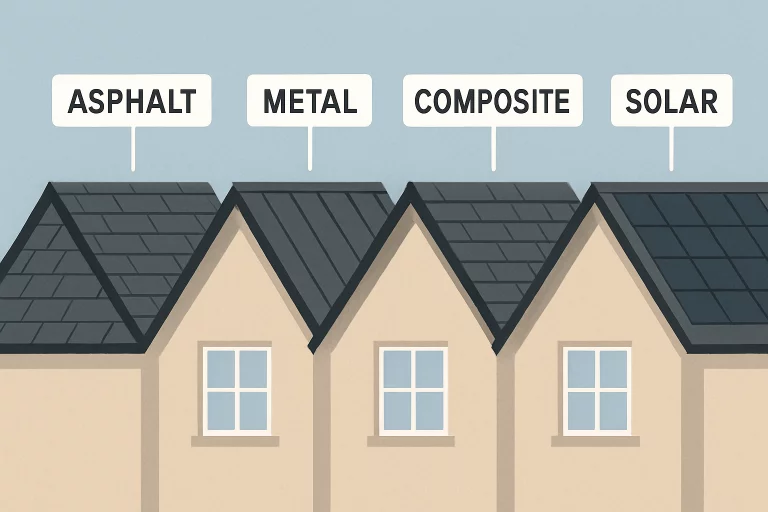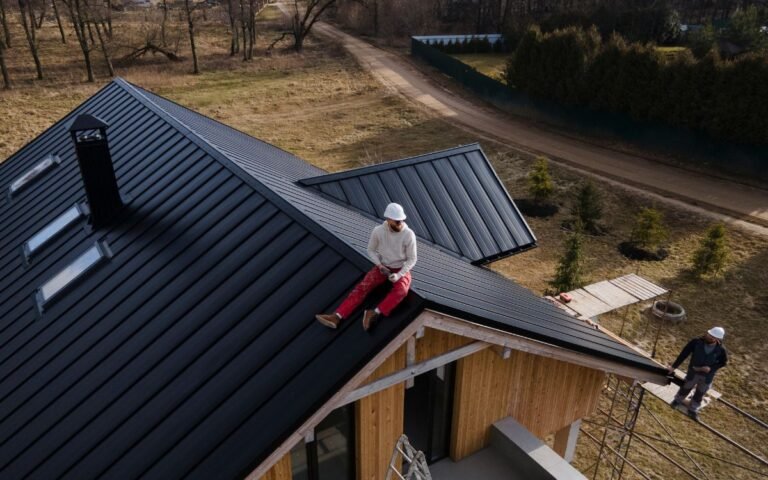Introduction
Shingle roofing remains an exceptionally popular choice among modern homeowners who value affordability, functional integrity, and the ability to select from an impressive variety of styles and colors. As today’s shingle roofing market evolves, homeowners have more choices. Each option caters to various home designs, climatic requirements, and personal preferences. This flexibility ensures that, whether considering a renovation or constructing a new home from the ground up, you can find a shingle roofing solution that will provide the best possible combination of durability, efficiency, and curb appeal for many years.
The reasons for shingle roofing’s enduring popularity extend far beyond appearance or price. Modern innovations have introduced products that are more aesthetically versatile and integrate high-performance features such as enhanced weather resistance, longer lifespans, and lower maintenance demands. Knowing how these advances influence the performance and appearance of your roof will empower you to make informed decisions, ultimately protecting your investment and elevating the look and value of your property. This guide will walk you through the most effective roofing materials, highlight cutting-edge advancements like solar technology, and illuminate the most important criteria to consider, so you can select an ideal solution that supports your household’s needs, budget, and aspirations.
Types of Shingle Roofing Materials
Thanks to innovations in building science and material engineering, modern shingle roofing comes in a wide range of types, each offering distinct advantages for homeowners focused on customization and long-term investment. Whether you’re pursuing a budget-friendly renovation or a high-end project with environmental priorities or advanced features, there’s a shingle option tailored to your needs. These key material categories also play a critical role when navigating roof insurance claims, as certain types may offer better durability or coverage compatibility. Below, we break down each leading roofing material’s essential characteristics and unique benefits.
Asphalt Shingles
Asphalt shingles are North America’s most widely used roofing material, thanks to their affordability, straightforward installation processes, and impressive adaptability to different roof shapes and styles. This material is available in two primary varieties, allowing homeowners to customize their roofing system based on both performance requirements and stylistic preferences:
- 3-Tab Shingles: These traditional, single-layered asphalt shingles provide an economical yet reliable roofing surface, typically lasting between 15 and 20 years when maintained correctly. They’re especially popular for traditional or modest home designs, thanks to their clean, flat appearance and uniform shape, which integrates seamlessly with more classic architectural lines.
- Architectural Shingles: Also known as dimensional or laminate shingles, these feature a multi-layered construction that delivers extra thickness, increased wind resistance (sometimes rated up to 130 mph), and a visually appealing, dimensional look that mimics more expensive roofing types. Their typical lifespan of 20 to 30 years, along with their ability to handle severe weather, makes them an outstanding investment for those seeking durability and a premium finish.

Metal Shingles
Metal shingles represent the next wave of high-performance roofing materials, merging striking aesthetics and superior resilience. Crafted from a variety of metals—such as galvanized steel, lightweight aluminum, elegant copper, or durable zinc—these shingles cater to modern tastes while offering unmatched longevity and environmental responsibility benefits.
- Longevity: When installed by experienced professionals and cared for routinely, metal roofs can last for half a century or more, more than doubling the expected service life of typical asphalt options. This exceptional lifespan minimizes the need for frequent repairs or replacements, further justifying the higher upfront investment.
- Energy Efficiency: One standout advantage of metal shingles is their natural reflectivity. They bounce solar radiation away from the home, helping to maintain cooler indoor temperatures during summer and reducing the load on air conditioning systems, which can translate to significant energy savings over time.
Composite Shingles
Sometimes known as synthetic or engineered shingles, composite shingles are purpose-built to address the typical common weaknesses of natural materials. Manufactured using a strategic blend of substances—including asphalt, fiberglass, polymers, and even recycled materials—composite shingles deliver outstanding durability and versatility for homeowners seeking a reliable, sustainable solution.
- Durability: Engineered to resist familiar sources of damage such as cracking, fading, splitting, and warping, composite shingles are particularly well-suited for zones that experience rapid temperature changes, prolonged sunlight, or frequent rainfall.
- Lightweight Design: Despite their resilience and sophisticated composition, composite shingles are surprisingly lightweight. This attribute simplifies the installation process, reduces labor costs, and eliminates the need for additional roof reinforcements, making them compatible with virtually any home without the risk of overburdening older structures.
Solar Shingles
For homeowners committed to cutting-edge technology and environmental stewardship, solar shingles represent one of the most innovative developments in residential roofing. These advanced shingles function as robust roof coverings while simultaneously generating clean electricity, merging sustainability, aesthetics, and value in one seamless package.
- Integration: Unlike traditional, bulky solar panels that sit on top of an existing roof, solar shingles are installed directly as part of the roofing surface. This integration creates a smooth, unified look and protects the solar technology from the elements.
- Aesthetics: Solar shingles are designed to closely resemble standard roofing materials, so homeowners no longer need to compromise visual appeal to pursue energy savings. This approach maintains the home’s architectural integrity while enabling a meaningful reduction in monthly energy costs.)
Factors to Consider When Choosing Shingle Roofing
Every home—and by extension, every homeowner—faces unique circumstances when it comes to roofing. Selecting the right shingle material isn’t simply about picking what’s popular or what matches your neighbor’s house. Careful evaluation of your locale’s weather patterns, your property’s structural needs, your intended budget, and your visual aspirations will help you make the most informed and rewarding decision possible.
- Climate: Choosing the right material for your environment ensures your investment matches years of changing weather. For example, metal shingles excel in snowy or windy regions thanks to their resistance to warping and rot, while composite and asphalt options provide reliability across various climates and budgets.
- Budget: Consider both the upfront costs and the projected lifespan of your roofing material. While asphalt shingles may present the most wallet-friendly solution at the time of installation, premium materials such as metal, slate, or solar shingles may ultimately deliver better value thanks to reduced maintenance demands and longer lifespans.
- Aesthetic Appeal: Roofing is a significant component of your home’s overall appearance. Whether you aim for a contemporary façade, classic lines, or a bold, custom look, select colors and textures that complement your home’s specific style and surroundings.
- Maintenance Requirements: The effort required to keep each shingle material in top form varies widely. Natural wood, for instance, needs regular sealing and inspection to prevent moisture-related problems, while composite and metal options generally demand little more than occasional cleaning and inspection. The right choice will fit your lifestyle and willingness to perform ongoing upkeep.
Advancements in Roofing Technology
Ongoing technological innovation is rapidly transforming the possibilities offered by residential roofing. One of the most significant leaps forward in recent years is achieving substantial energy efficiency and sustainability while maintaining—or enhancing—a roof’s aesthetic appeal. Solar-integrated roofing, in particular, allows homeowners to harness renewable energy from sunlight without intrusive add-ons. These systems generate clean power and uphold the roof’s core purpose: to protect the home in all conditions. For families looking to minimize environmental impact, decrease monthly utility expenses, and raise the resale value of their homes, these advancements represent a wise, forward-thinking investment that pairs seamlessly with modern design philosophies.
Conclusion
Choosing the right shingle roofing material is far more than a routine maintenance task—it is a strategic decision that has a lasting impact on your home’s beauty, safety, and value. By weighing factors like local climate, preferred aesthetics, expected upkeep, and available budget, you can find a solution that is tailor-made to meet both your practical needs and personal preferences. From tried-and-true asphalt and show-stopping metal to versatile composites and revolutionary solar, today’s shingle roofing solutions offer something for every home and every homeowner.
Staying attuned to advancements like solar-integrated shingles and understanding your unique priorities will help you create a long-term roofing system that excels. Ultimately, the right shingle roof is more than an exterior layer of protection; it’s a wise investment in your property’s long-term performance, curb appeal, and even its environmental footprint.

